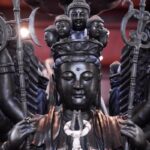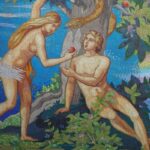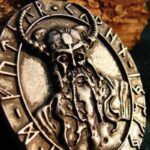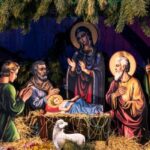We explain what the tree of life is and what it represents. In addition, we tell you what its meaning is in different mythological traditions.

What is the tree of life?
The tree of life or sacred tree It is an archetype common to numerous mythologies, religions and folklore stories of different cultures of the world, which proposes the existence of a cosmic and eternal tree that It plays a fundamental role for the existence of the world and/or life
Mythical trees such as the Yggdrasil of Norse mythology, the tree of good and evil of the biblical Genesis, and even the Bo tree of the Buddhist religion are examples of the different incarnations of this ancient symbol. As with many other symbols, the tree of life also appears in other types of discourses and contexts, such as scientific and artistic. From there comes the universal tree of life, a scheme for the evolution of life proposed by Charles Darwin in his text The origin of species of 1859, or The tree of lifea 1909 painting by the Austrian painter Gustav Klimt.
The tree of life is closely linked to the world tree and, in its various contexts of appearance, often plays a mysterious role. It is usually hidden in labyrinths, sacred gardens or remote places and guarded by different types of guardians, since it usually also hides great treasures, ancestral truths or other types of secrets that, normally, a hero is obliged to obtain.
From a symbolic point of view, the tree of life represents the primal energies of creation, which nourish the world and keep it in balance. This often involves embodying the divine task, which is why it is a very common symbol in religious art and architecture, associated with both life and death. Its branches raised towards the sky and its roots immersed in the depths refer to the connection between the fundamental kingdoms and, therefore, to universal harmony and life cycles.
See also: Norse mythology
The tree of life in mythology
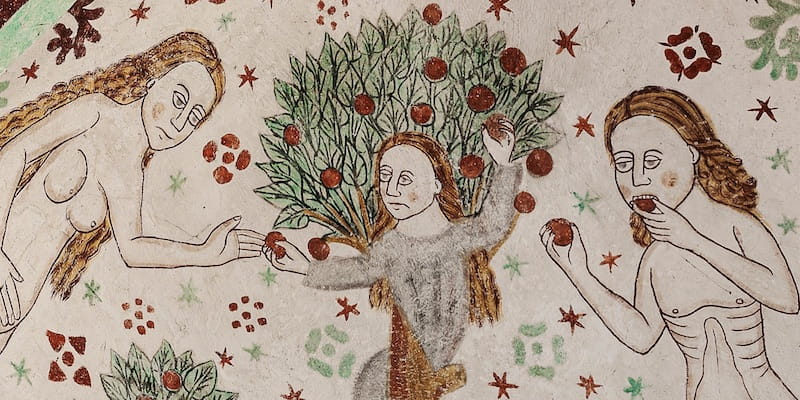
Some of the best-known examples of the appearance of the tree of life in different mythological traditions are:
- In Norse mythology, Yggdrasil, the world tree connected the different planes of existence, such as the fairy kingdom (Älfheim), of the dead (Helheim) or of the gods (Asgard), among others. According to tradition, the god Odin hangs from its branches to acquire wisdom and its apples were responsible for the immortality of the gods.
- In the monotheistic religious tradition shared by Judaism, Christianity and Islam In the Garden of Eden, created by God, there was a tree sacred and forbidden to the first human beings, who disobeyed the divine will and ate its fruits, which caused the misfortune of humanity and the beginning of death. This tree is called in the different sacred texts of these sister religions “the tree of good and evil” “the tree of immortality” or “the tree of knowledge.”
- In Chinese mythology, the tree of life is often represented accompanied by a phoenix and/or a dragon creatures that guarded their ancestral peaches, capable of granting eternal life and that ripened once every 3 thousand years.
- In the Buddhist religious tradition, the Bo tree also known as Bodhi, is a fig or pipal tree in whose shade the young Buddha sat to meditate until he obtained enlightenment. The seeds of this tree were later carried by Buddha to Prayag Raj, near Mount Kailash, where the Buddhist Medicine Palace is today.
- In the Hindu religion, the Akshaya Vata It is an eternal tree and immune to the divine cycles of destruction and creation, so that the god Krishna rests in its leaves, in the form of a baby.
- In different Mesoamerican religions and mythologies, the tree of life is a common and recurring motif in the middle or late formative periods of its history. It can be found in Mayan, Aztec, Olmec, Mixtec and Izapa representations, among others, often identified with a ceiba tree or an upright alligator.
- In Turkish mythology and imagination, the world tree is called Ulukayin and is believed to have been planted by the god Kayra. This tree also symbolizes faith in the rebirth, growth and development of the Turkish peoples, which is why it is present in different patriotic and political symbols.
- In Hebrew mysticism and Kabbalah, the tree of life is a central symbol and recurring, represented as a set of 10 spheres (sefirot) and 22 paths that the initiate must follow to approach the truth of God. According to Kabbalah, the world tree constitutes a kind of map of creation.
Continue with: Story of Adam and Eve
References
- “Tree of life (biology)” on Wikipedia.
- “What is the meaning of the tree of life” in Clarín (Argentina).
- “Tree of life (religion)” in The Encyclopaedia Britannica.


